1/
Why does albuterol induce a lactic acidosis when given in high doses?
This can occur even as patients with severe asthma exacerbations are improving in every other way.
#medtwitter #tweetorial
Why does albuterol induce a lactic acidosis when given in high doses?
This can occur even as patients with severe asthma exacerbations are improving in every other way.
#medtwitter #tweetorial
2/
The first observation that β₂ agonists could produce lactic acidosis came in the early 1980s.
Terbutaline (a β₂ agonist like albuterol) was given as a tocolytic to 6 women in preterm labor. Their serum lactate levels rose within a few hours.
https://pubmed.ncbi.nlm.nih.gov/7315890/ ">https://pubmed.ncbi.nlm.nih.gov/7315890/&...
The first observation that β₂ agonists could produce lactic acidosis came in the early 1980s.
Terbutaline (a β₂ agonist like albuterol) was given as a tocolytic to 6 women in preterm labor. Their serum lactate levels rose within a few hours.
https://pubmed.ncbi.nlm.nih.gov/7315890/ ">https://pubmed.ncbi.nlm.nih.gov/7315890/&...
3/
By 1985, the first case report of lactic acidosis from inhaled β₂ agonist therapy for status asthmaticus was published.
The patient& #39;s acidemia persisted despite normalization of PCO₂, and a new anion gap emerged.
 https://abs.twimg.com/emoji/v2/... draggable="false" alt="💥" title="Symbol für eine Kollision" aria-label="Emoji: Symbol für eine Kollision">Her lactate level was 7.
https://abs.twimg.com/emoji/v2/... draggable="false" alt="💥" title="Symbol für eine Kollision" aria-label="Emoji: Symbol für eine Kollision">Her lactate level was 7.
https://pubmed.ncbi.nlm.nih.gov/4033719/ ">https://pubmed.ncbi.nlm.nih.gov/4033719/&...
By 1985, the first case report of lactic acidosis from inhaled β₂ agonist therapy for status asthmaticus was published.
The patient& #39;s acidemia persisted despite normalization of PCO₂, and a new anion gap emerged.
https://pubmed.ncbi.nlm.nih.gov/4033719/ ">https://pubmed.ncbi.nlm.nih.gov/4033719/&...
4/
Next let& #39;s review lactate production.
Lactate is formed from pyruvate (a product of glycolysis), as catalyzed by lactate dehydrogenase.
This occurs w/ either pyruvate over-production or impairment of cellular metabolism.
https://pubmed.ncbi.nlm.nih.gov/22613097/ ">https://pubmed.ncbi.nlm.nih.gov/22613097/...
Next let& #39;s review lactate production.
Lactate is formed from pyruvate (a product of glycolysis), as catalyzed by lactate dehydrogenase.
This occurs w/ either pyruvate over-production or impairment of cellular metabolism.
https://pubmed.ncbi.nlm.nih.gov/22613097/ ">https://pubmed.ncbi.nlm.nih.gov/22613097/...
5/
Adrenergic signaling is one source of increased pyruvate production.
Catecholamines, such as epinephrine, signal through β₂ receptors in tissues like muscle and liver.
 https://abs.twimg.com/emoji/v2/... draggable="false" alt="💡" title="Elektrische Glühbirne" aria-label="Emoji: Elektrische Glühbirne">This induces glycogen mobilization to glucose.
https://abs.twimg.com/emoji/v2/... draggable="false" alt="💡" title="Elektrische Glühbirne" aria-label="Emoji: Elektrische Glühbirne">This induces glycogen mobilization to glucose.
https://pubmed.ncbi.nlm.nih.gov/25394679/ ">https://pubmed.ncbi.nlm.nih.gov/25394679/...
Adrenergic signaling is one source of increased pyruvate production.
Catecholamines, such as epinephrine, signal through β₂ receptors in tissues like muscle and liver.
https://pubmed.ncbi.nlm.nih.gov/25394679/ ">https://pubmed.ncbi.nlm.nih.gov/25394679/...
6/
β₂ signalling thus increases intracellular glucose, fueling glycolysis.
More glycolysis means https://abs.twimg.com/emoji/v2/... draggable="false" alt="⬆️" title="Pfeil nach oben" aria-label="Emoji: Pfeil nach oben"> pyruvate production. Some of that pyruvate goes into the Krebs (aka TCA) cycle after conversion by pyruvate dehydrogenase.
https://abs.twimg.com/emoji/v2/... draggable="false" alt="⬆️" title="Pfeil nach oben" aria-label="Emoji: Pfeil nach oben"> pyruvate production. Some of that pyruvate goes into the Krebs (aka TCA) cycle after conversion by pyruvate dehydrogenase.
 https://abs.twimg.com/emoji/v2/... draggable="false" alt="🔑" title="Schlüssel" aria-label="Emoji: Schlüssel">The rest becomes lactate.
https://abs.twimg.com/emoji/v2/... draggable="false" alt="🔑" title="Schlüssel" aria-label="Emoji: Schlüssel">The rest becomes lactate.
https://pubmed.ncbi.nlm.nih.gov/25394679/ ">https://pubmed.ncbi.nlm.nih.gov/25394679/...
β₂ signalling thus increases intracellular glucose, fueling glycolysis.
More glycolysis means
https://pubmed.ncbi.nlm.nih.gov/25394679/ ">https://pubmed.ncbi.nlm.nih.gov/25394679/...
7/
It’s therefore not surprising that albuterol, as a β₂ agonist, can cause lactic acidosis.
But adrenergic signaling and increased glycolysis may not be the whole story.
It’s therefore not surprising that albuterol, as a β₂ agonist, can cause lactic acidosis.
But adrenergic signaling and increased glycolysis may not be the whole story.
8/
Recall from tweet #6 that pyruvate dehydrogenase allows pyruvate to enter the Krebs/TCA cycle (by converting it to acetyl-CoA).
As we learned, any pyruvate that enters the Krebs cycle won& #39;t become lactate.
http://www.bmrat.org/index.php/BMRAT/article/view/591">https://www.bmrat.org/index.php...
Recall from tweet #6 that pyruvate dehydrogenase allows pyruvate to enter the Krebs/TCA cycle (by converting it to acetyl-CoA).
As we learned, any pyruvate that enters the Krebs cycle won& #39;t become lactate.
http://www.bmrat.org/index.php/BMRAT/article/view/591">https://www.bmrat.org/index.php...
9/
It turns out that pyruvate dehydrogenase is a heavily regulated enzyme, including by free fatty acids (FFA), which phosphorylate and inhibit its function.
 https://abs.twimg.com/emoji/v2/... draggable="false" alt="💡" title="Elektrische Glühbirne" aria-label="Emoji: Elektrische Glühbirne">In the presence of FFA, less pyruvate gets converted to acetyl-CoA.
https://abs.twimg.com/emoji/v2/... draggable="false" alt="💡" title="Elektrische Glühbirne" aria-label="Emoji: Elektrische Glühbirne">In the presence of FFA, less pyruvate gets converted to acetyl-CoA.
https://pubmed.ncbi.nlm.nih.gov/24116221/ ">https://pubmed.ncbi.nlm.nih.gov/24116221/...
It turns out that pyruvate dehydrogenase is a heavily regulated enzyme, including by free fatty acids (FFA), which phosphorylate and inhibit its function.
https://pubmed.ncbi.nlm.nih.gov/24116221/ ">https://pubmed.ncbi.nlm.nih.gov/24116221/...
10/
Amazingly, β₂ agonists increase plasma free fatty acid levels (via lipolysis).
So https://abs.twimg.com/emoji/v2/... draggable="false" alt="⬆️" title="Pfeil nach oben" aria-label="Emoji: Pfeil nach oben">free fatty acids from albuterol inhibit pyruvate dehydrogenase, increasing pyruvate availability in cells.
https://abs.twimg.com/emoji/v2/... draggable="false" alt="⬆️" title="Pfeil nach oben" aria-label="Emoji: Pfeil nach oben">free fatty acids from albuterol inhibit pyruvate dehydrogenase, increasing pyruvate availability in cells.
 https://abs.twimg.com/emoji/v2/... draggable="false" alt="🔑" title="Schlüssel" aria-label="Emoji: Schlüssel">This excess pyruvate is then converted to lactate.
https://abs.twimg.com/emoji/v2/... draggable="false" alt="🔑" title="Schlüssel" aria-label="Emoji: Schlüssel">This excess pyruvate is then converted to lactate.
https://www.ncbi.nlm.nih.gov/pmc/articles/PMC2495720/">https://www.ncbi.nlm.nih.gov/pmc/artic...
Amazingly, β₂ agonists increase plasma free fatty acid levels (via lipolysis).
So
https://www.ncbi.nlm.nih.gov/pmc/articles/PMC2495720/">https://www.ncbi.nlm.nih.gov/pmc/artic...
11/
Let& #39;s conclude with a fascinating wrinkle to this story.
Any asthmatic who gets enough albuterol to induce lactic acidosis will also receive corticosteroids...
Let& #39;s conclude with a fascinating wrinkle to this story.
Any asthmatic who gets enough albuterol to induce lactic acidosis will also receive corticosteroids...
12/
Steroids actually potentiate the effects of β₂ agonists in various tissues, including lung, by https://abs.twimg.com/emoji/v2/... draggable="false" alt="⬆️" title="Pfeil nach oben" aria-label="Emoji: Pfeil nach oben"> the number of β receptors.
https://abs.twimg.com/emoji/v2/... draggable="false" alt="⬆️" title="Pfeil nach oben" aria-label="Emoji: Pfeil nach oben"> the number of β receptors.
 https://abs.twimg.com/emoji/v2/... draggable="false" alt="🔑" title="Schlüssel" aria-label="Emoji: Schlüssel">Thus they may make albuterol both more effective as a bronchodilator and more likely to induce lactic acidosis.
https://abs.twimg.com/emoji/v2/... draggable="false" alt="🔑" title="Schlüssel" aria-label="Emoji: Schlüssel">Thus they may make albuterol both more effective as a bronchodilator and more likely to induce lactic acidosis.
https://pubmed.ncbi.nlm.nih.gov/6248064/ ">https://pubmed.ncbi.nlm.nih.gov/6248064/&...
Steroids actually potentiate the effects of β₂ agonists in various tissues, including lung, by
https://pubmed.ncbi.nlm.nih.gov/6248064/ ">https://pubmed.ncbi.nlm.nih.gov/6248064/&...
13/
 https://abs.twimg.com/emoji/v2/... draggable="false" alt="🔑" title="Schlüssel" aria-label="Emoji: Schlüssel">Albuterol can induce lactic acidosis by:
https://abs.twimg.com/emoji/v2/... draggable="false" alt="🔑" title="Schlüssel" aria-label="Emoji: Schlüssel">Albuterol can induce lactic acidosis by:
 https://abs.twimg.com/emoji/v2/... draggable="false" alt="⬆️" title="Pfeil nach oben" aria-label="Emoji: Pfeil nach oben"> glycolysis and pyruvate availability, which is converted to lactate
https://abs.twimg.com/emoji/v2/... draggable="false" alt="⬆️" title="Pfeil nach oben" aria-label="Emoji: Pfeil nach oben"> glycolysis and pyruvate availability, which is converted to lactate
 https://abs.twimg.com/emoji/v2/... draggable="false" alt="⬆️" title="Pfeil nach oben" aria-label="Emoji: Pfeil nach oben"> serum FFA, which
https://abs.twimg.com/emoji/v2/... draggable="false" alt="⬆️" title="Pfeil nach oben" aria-label="Emoji: Pfeil nach oben"> serum FFA, which https://abs.twimg.com/emoji/v2/... draggable="false" alt="❌" title="Kreuzzeichen" aria-label="Emoji: Kreuzzeichen">pyruvate dehydrogenase, also increasing pyruvate availability
https://abs.twimg.com/emoji/v2/... draggable="false" alt="❌" title="Kreuzzeichen" aria-label="Emoji: Kreuzzeichen">pyruvate dehydrogenase, also increasing pyruvate availability
 https://abs.twimg.com/emoji/v2/... draggable="false" alt="🔑" title="Schlüssel" aria-label="Emoji: Schlüssel">Steroids
https://abs.twimg.com/emoji/v2/... draggable="false" alt="🔑" title="Schlüssel" aria-label="Emoji: Schlüssel">Steroids https://abs.twimg.com/emoji/v2/... draggable="false" alt="⬆️" title="Pfeil nach oben" aria-label="Emoji: Pfeil nach oben">β receptor number, potentiating albuterol& #39;s ability to
https://abs.twimg.com/emoji/v2/... draggable="false" alt="⬆️" title="Pfeil nach oben" aria-label="Emoji: Pfeil nach oben">β receptor number, potentiating albuterol& #39;s ability to  https://abs.twimg.com/emoji/v2/... draggable="false" alt="⬆️" title="Pfeil nach oben" aria-label="Emoji: Pfeil nach oben">lactate
https://abs.twimg.com/emoji/v2/... draggable="false" alt="⬆️" title="Pfeil nach oben" aria-label="Emoji: Pfeil nach oben">lactate

 Read on Twitter
Read on Twitter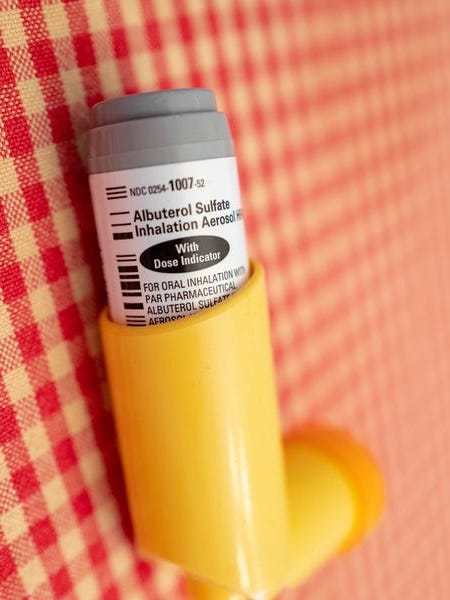
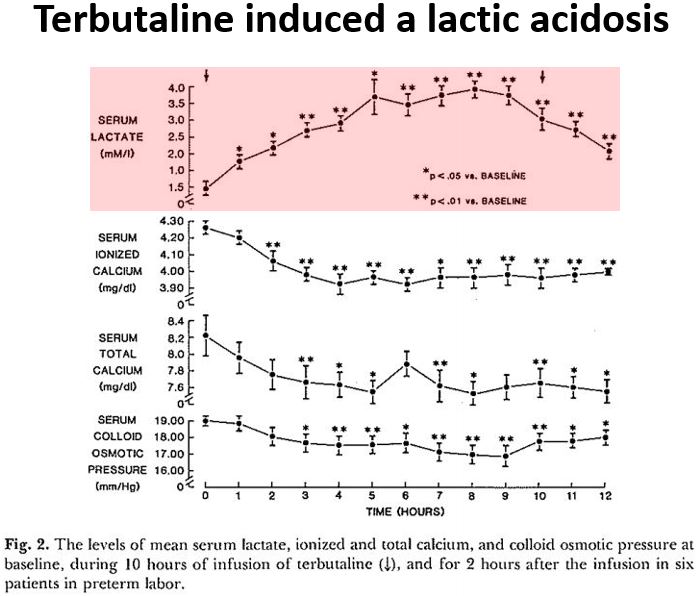
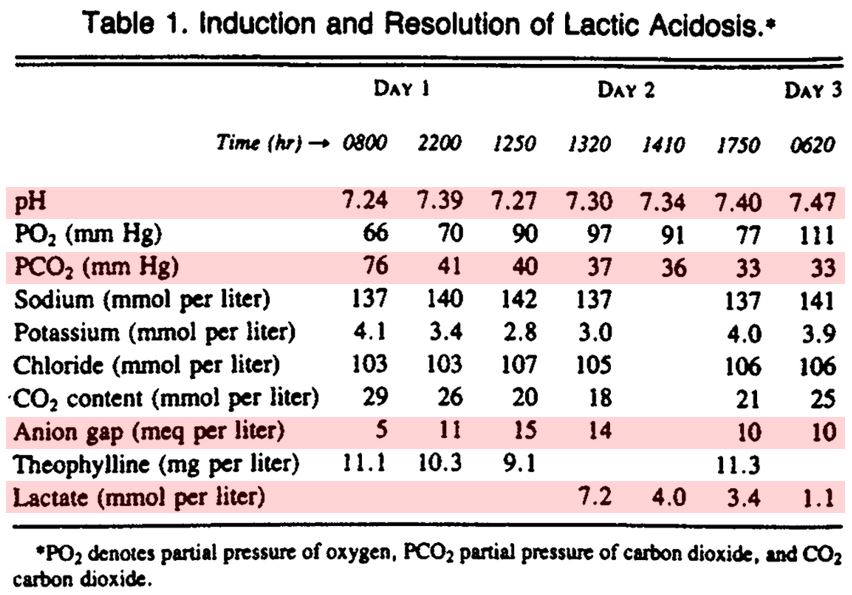 Her lactate level was 7. https://pubmed.ncbi.nlm.nih.gov/4033719/&..." title="3/By 1985, the first case report of lactic acidosis from inhaled β₂ agonist therapy for status asthmaticus was published.The patient& #39;s acidemia persisted despite normalization of PCO₂, and a new anion gap emerged.https://abs.twimg.com/emoji/v2/... draggable="false" alt="💥" title="Symbol für eine Kollision" aria-label="Emoji: Symbol für eine Kollision">Her lactate level was 7. https://pubmed.ncbi.nlm.nih.gov/4033719/&..." class="img-responsive" style="max-width:100%;"/>
Her lactate level was 7. https://pubmed.ncbi.nlm.nih.gov/4033719/&..." title="3/By 1985, the first case report of lactic acidosis from inhaled β₂ agonist therapy for status asthmaticus was published.The patient& #39;s acidemia persisted despite normalization of PCO₂, and a new anion gap emerged.https://abs.twimg.com/emoji/v2/... draggable="false" alt="💥" title="Symbol für eine Kollision" aria-label="Emoji: Symbol für eine Kollision">Her lactate level was 7. https://pubmed.ncbi.nlm.nih.gov/4033719/&..." class="img-responsive" style="max-width:100%;"/>

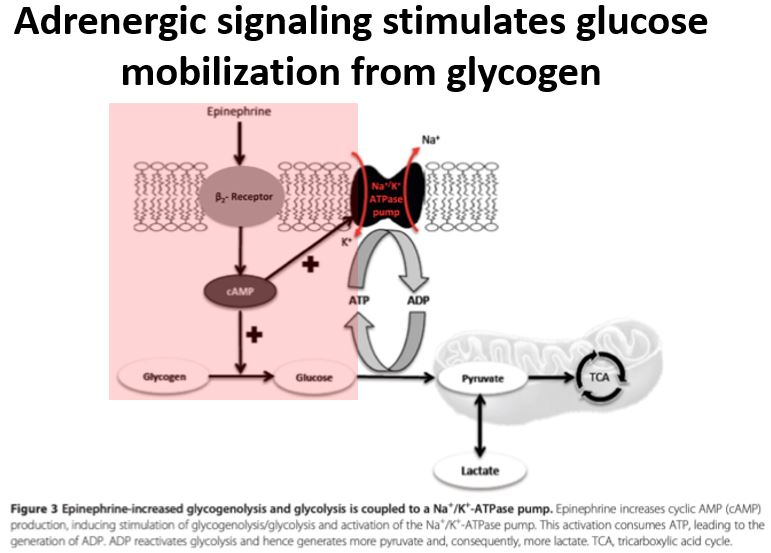 This induces glycogen mobilization to glucose. https://pubmed.ncbi.nlm.nih.gov/25394679/..." title="5/Adrenergic signaling is one source of increased pyruvate production.Catecholamines, such as epinephrine, signal through β₂ receptors in tissues like muscle and liver. https://abs.twimg.com/emoji/v2/... draggable="false" alt="💡" title="Elektrische Glühbirne" aria-label="Emoji: Elektrische Glühbirne">This induces glycogen mobilization to glucose. https://pubmed.ncbi.nlm.nih.gov/25394679/..." class="img-responsive" style="max-width:100%;"/>
This induces glycogen mobilization to glucose. https://pubmed.ncbi.nlm.nih.gov/25394679/..." title="5/Adrenergic signaling is one source of increased pyruvate production.Catecholamines, such as epinephrine, signal through β₂ receptors in tissues like muscle and liver. https://abs.twimg.com/emoji/v2/... draggable="false" alt="💡" title="Elektrische Glühbirne" aria-label="Emoji: Elektrische Glühbirne">This induces glycogen mobilization to glucose. https://pubmed.ncbi.nlm.nih.gov/25394679/..." class="img-responsive" style="max-width:100%;"/>
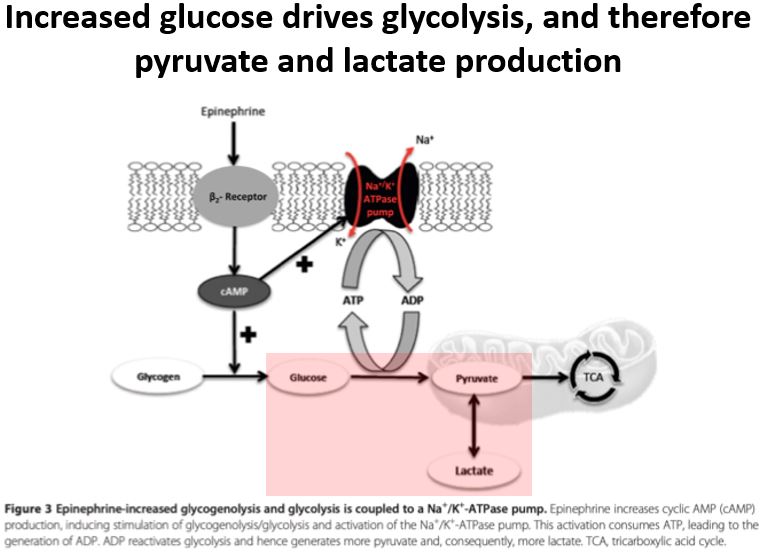 pyruvate production. Some of that pyruvate goes into the Krebs (aka TCA) cycle after conversion by pyruvate dehydrogenase.https://abs.twimg.com/emoji/v2/... draggable="false" alt="🔑" title="Schlüssel" aria-label="Emoji: Schlüssel">The rest becomes lactate. https://pubmed.ncbi.nlm.nih.gov/25394679/..." title="6/β₂ signalling thus increases intracellular glucose, fueling glycolysis.More glycolysis means https://abs.twimg.com/emoji/v2/... draggable="false" alt="⬆️" title="Pfeil nach oben" aria-label="Emoji: Pfeil nach oben"> pyruvate production. Some of that pyruvate goes into the Krebs (aka TCA) cycle after conversion by pyruvate dehydrogenase.https://abs.twimg.com/emoji/v2/... draggable="false" alt="🔑" title="Schlüssel" aria-label="Emoji: Schlüssel">The rest becomes lactate. https://pubmed.ncbi.nlm.nih.gov/25394679/..." class="img-responsive" style="max-width:100%;"/>
pyruvate production. Some of that pyruvate goes into the Krebs (aka TCA) cycle after conversion by pyruvate dehydrogenase.https://abs.twimg.com/emoji/v2/... draggable="false" alt="🔑" title="Schlüssel" aria-label="Emoji: Schlüssel">The rest becomes lactate. https://pubmed.ncbi.nlm.nih.gov/25394679/..." title="6/β₂ signalling thus increases intracellular glucose, fueling glycolysis.More glycolysis means https://abs.twimg.com/emoji/v2/... draggable="false" alt="⬆️" title="Pfeil nach oben" aria-label="Emoji: Pfeil nach oben"> pyruvate production. Some of that pyruvate goes into the Krebs (aka TCA) cycle after conversion by pyruvate dehydrogenase.https://abs.twimg.com/emoji/v2/... draggable="false" alt="🔑" title="Schlüssel" aria-label="Emoji: Schlüssel">The rest becomes lactate. https://pubmed.ncbi.nlm.nih.gov/25394679/..." class="img-responsive" style="max-width:100%;"/>
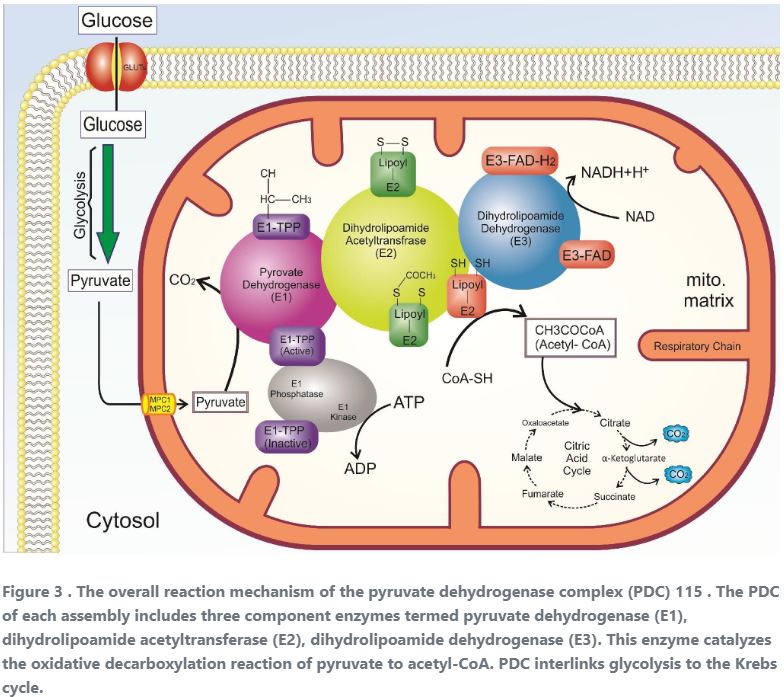
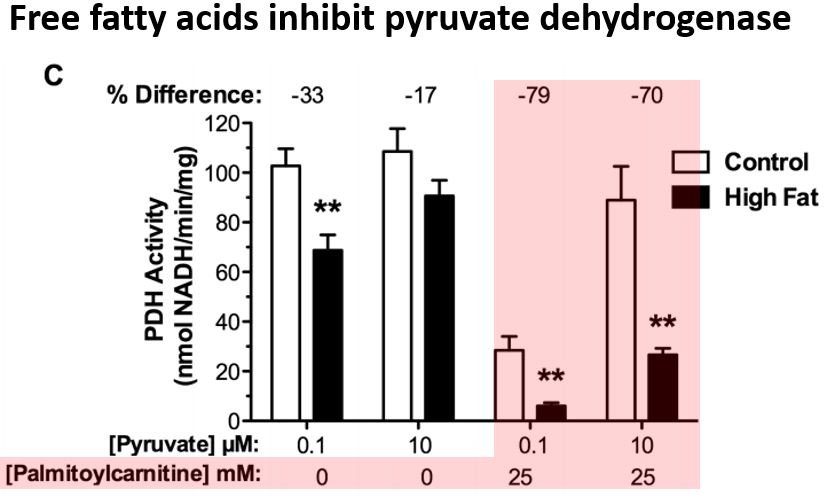 In the presence of FFA, less pyruvate gets converted to acetyl-CoA. https://pubmed.ncbi.nlm.nih.gov/24116221/..." title="9/It turns out that pyruvate dehydrogenase is a heavily regulated enzyme, including by free fatty acids (FFA), which phosphorylate and inhibit its function.https://abs.twimg.com/emoji/v2/... draggable="false" alt="💡" title="Elektrische Glühbirne" aria-label="Emoji: Elektrische Glühbirne">In the presence of FFA, less pyruvate gets converted to acetyl-CoA. https://pubmed.ncbi.nlm.nih.gov/24116221/..." class="img-responsive" style="max-width:100%;"/>
In the presence of FFA, less pyruvate gets converted to acetyl-CoA. https://pubmed.ncbi.nlm.nih.gov/24116221/..." title="9/It turns out that pyruvate dehydrogenase is a heavily regulated enzyme, including by free fatty acids (FFA), which phosphorylate and inhibit its function.https://abs.twimg.com/emoji/v2/... draggable="false" alt="💡" title="Elektrische Glühbirne" aria-label="Emoji: Elektrische Glühbirne">In the presence of FFA, less pyruvate gets converted to acetyl-CoA. https://pubmed.ncbi.nlm.nih.gov/24116221/..." class="img-responsive" style="max-width:100%;"/>
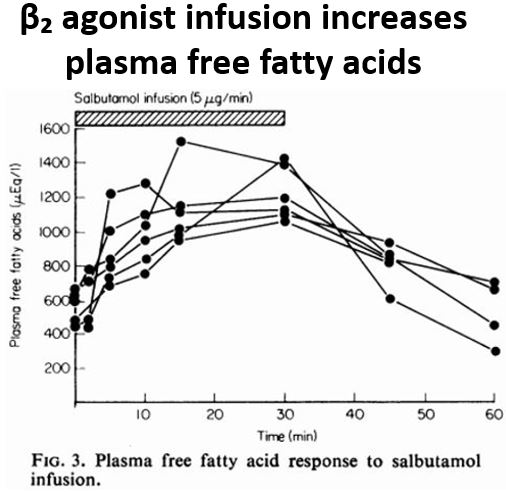 free fatty acids from albuterol inhibit pyruvate dehydrogenase, increasing pyruvate availability in cells.https://abs.twimg.com/emoji/v2/... draggable="false" alt="🔑" title="Schlüssel" aria-label="Emoji: Schlüssel">This excess pyruvate is then converted to lactate. https://www.ncbi.nlm.nih.gov/pmc/artic..." title="10/Amazingly, β₂ agonists increase plasma free fatty acid levels (via lipolysis).Sohttps://abs.twimg.com/emoji/v2/... draggable="false" alt="⬆️" title="Pfeil nach oben" aria-label="Emoji: Pfeil nach oben">free fatty acids from albuterol inhibit pyruvate dehydrogenase, increasing pyruvate availability in cells.https://abs.twimg.com/emoji/v2/... draggable="false" alt="🔑" title="Schlüssel" aria-label="Emoji: Schlüssel">This excess pyruvate is then converted to lactate. https://www.ncbi.nlm.nih.gov/pmc/artic..." class="img-responsive" style="max-width:100%;"/>
free fatty acids from albuterol inhibit pyruvate dehydrogenase, increasing pyruvate availability in cells.https://abs.twimg.com/emoji/v2/... draggable="false" alt="🔑" title="Schlüssel" aria-label="Emoji: Schlüssel">This excess pyruvate is then converted to lactate. https://www.ncbi.nlm.nih.gov/pmc/artic..." title="10/Amazingly, β₂ agonists increase plasma free fatty acid levels (via lipolysis).Sohttps://abs.twimg.com/emoji/v2/... draggable="false" alt="⬆️" title="Pfeil nach oben" aria-label="Emoji: Pfeil nach oben">free fatty acids from albuterol inhibit pyruvate dehydrogenase, increasing pyruvate availability in cells.https://abs.twimg.com/emoji/v2/... draggable="false" alt="🔑" title="Schlüssel" aria-label="Emoji: Schlüssel">This excess pyruvate is then converted to lactate. https://www.ncbi.nlm.nih.gov/pmc/artic..." class="img-responsive" style="max-width:100%;"/>
 the number of β receptors. https://abs.twimg.com/emoji/v2/... draggable="false" alt="🔑" title="Schlüssel" aria-label="Emoji: Schlüssel">Thus they may make albuterol both more effective as a bronchodilator and more likely to induce lactic acidosis. https://pubmed.ncbi.nlm.nih.gov/6248064/&..." title="12/Steroids actually potentiate the effects of β₂ agonists in various tissues, including lung, by https://abs.twimg.com/emoji/v2/... draggable="false" alt="⬆️" title="Pfeil nach oben" aria-label="Emoji: Pfeil nach oben"> the number of β receptors. https://abs.twimg.com/emoji/v2/... draggable="false" alt="🔑" title="Schlüssel" aria-label="Emoji: Schlüssel">Thus they may make albuterol both more effective as a bronchodilator and more likely to induce lactic acidosis. https://pubmed.ncbi.nlm.nih.gov/6248064/&..." class="img-responsive" style="max-width:100%;"/>
the number of β receptors. https://abs.twimg.com/emoji/v2/... draggable="false" alt="🔑" title="Schlüssel" aria-label="Emoji: Schlüssel">Thus they may make albuterol both more effective as a bronchodilator and more likely to induce lactic acidosis. https://pubmed.ncbi.nlm.nih.gov/6248064/&..." title="12/Steroids actually potentiate the effects of β₂ agonists in various tissues, including lung, by https://abs.twimg.com/emoji/v2/... draggable="false" alt="⬆️" title="Pfeil nach oben" aria-label="Emoji: Pfeil nach oben"> the number of β receptors. https://abs.twimg.com/emoji/v2/... draggable="false" alt="🔑" title="Schlüssel" aria-label="Emoji: Schlüssel">Thus they may make albuterol both more effective as a bronchodilator and more likely to induce lactic acidosis. https://pubmed.ncbi.nlm.nih.gov/6248064/&..." class="img-responsive" style="max-width:100%;"/>


